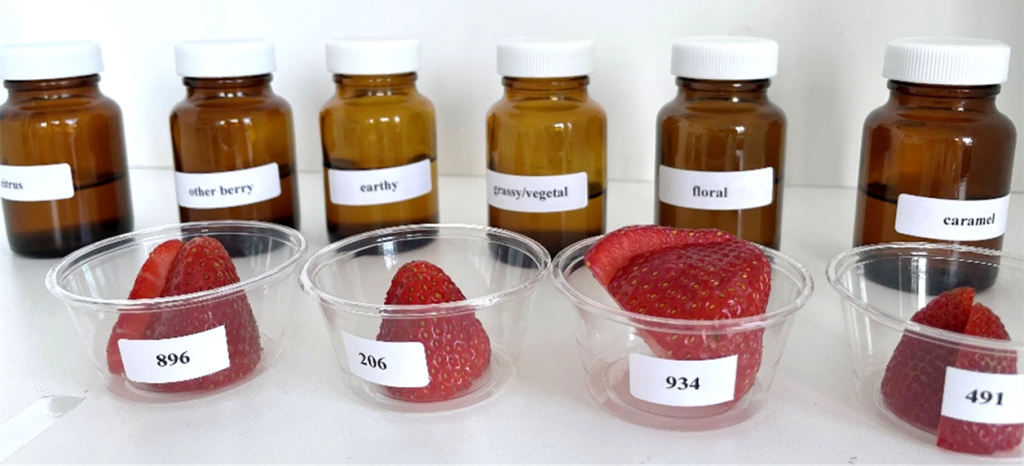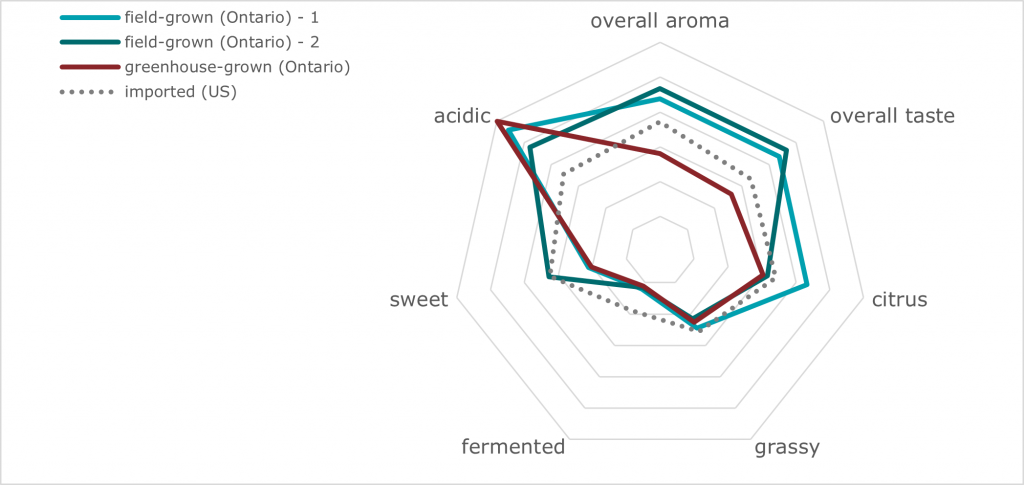Defining the sensory profiles of fresh berries
This case study highlights strawberries but a similar approach can be applied to other berry types (e.g. blueberries, blackberries,
raspberries, etc.).
What we did
Over five sessions in June and July 2023, we created a descriptive lexicon for fresh strawberries including a list of sensory descriptors (aroma, flavour, taste and texture), aroma references and definitions to describe the profile of fresh strawberries.
The products
During evaluation, our trained sensory panelists evaluated strawberries using our descriptive lexicon. We included: 1. field-grown (Ontario),
2. greenhouse-grown (Ontario) and 3. imported (U.S.)
Products were tasted blind, under red lighting and identified with a 3-digit code to avoid bias. All varieties were purchased commercially.
The descriptive lexicon *(select attributes displayed only)
- Aroma/flavour attributes: overall aroma and taste, citrus, floral, grassy, fermented, honey
- Taste attributes: sweet, acidic, bitter, astringent
- Texture attributes: firm, granular flesh, seedy, juicy

What we found
A profiling exercise included two field-grown Ontario strawberries, a greenhouse-grown Ontario strawberry and an imported strawberry from the U.S. There was a trend of higher overall aroma and taste for the Ontario field-grown strawberries. The greenhouse-grown strawberries were distinct with a tart acidity and lower overall aromatic and taste profile. The U.S. imported strawberries were higher in fermented aroma and had lower acidity.

Full descriptive sensory profiles, similar to the ones generated in this pilot study are key to understanding the sensory diversity in your product set. This knowledge is useful for marketing, product positioning and variety selection in production and variety development. Results can also be correlated with consumer acceptance to understand the sensory drivers that impact liking.
Questions? Looking for more information, contact:
amy.bowen@vinelandresearch.com
